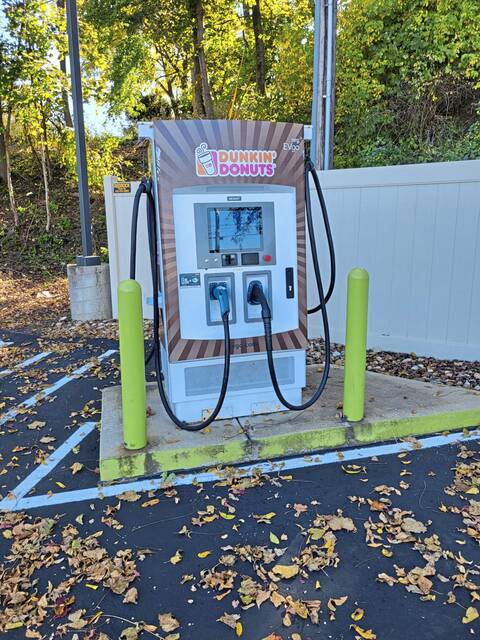Editorial: Concrete EV revenue decisions should come before charging stations
In 2011, there were just about 16,000 electric vehicles in the United States.
By 2021, that number had climbed to 2 million. What was a new, quirky technology a decade before had become a growing part of the transportation landscape.
That means other things have to change, too. In the post-World War II highway construction boom, the landscape shifted. Gas stations became more prevalent to support the cars traveling on the new roads.
With electric vehicle expansion, that is happening, too. Some of the bigger gas and convenience store chains — like GetGo and Sheetz — have been adding charging stations as well as gas pumps to cater to customers with any type of vehicle.
The federal government is pushing for more charging station construction as part of infrastructure development. In September, a $25.4 million award was made under the National Electric Vehicle Infrastructure Formula Program, part of $170 million for statewide investment to develop a charging network along the state’s main arteries.
The idea is not just to support the 2 million cars on the road, but the next 2 million that could be purchased if people have more confidence in the support structure for traveling and charging.
And that’s great. But there is another aspect of infrastructure that needs to be considered: the framework of fees.
If Pennsylvania is going to wholeheartedly embrace electric vehicles, there has to be a proactive look at how they will pay their way beyond the stations. They also have to pick up the tab for their wear and tear on the roads.
Gas taxes pour money into PennDOT projects, but they don’t do enough. That’s why the Pennsylvania Turnpike keeps funneling money it raises into the PennDOT coffers. That’s why the state was looking to use a public-private partnership to toll bridge projects.
It isn’t just an issue in Pennsylvania. The Pew Research Trust is looking at the impact from Massachusetts to Hawaii. The Keystone State is looking to collect money from fueling up at charging stations. The federal government is pushing for road-use fee pilot programs. Other states are considering mileage fees.
Trying to figure this out after the fact is a failing. Gas tax revenues are ticking down while the cost of maintaining the roads speeds uphill. This is something that Pennsylvania — like other states and the federal government — should have been addressing over the past 10 years.
But now, as the charging network is expanding, it is all the more important to figure it out quickly.
Remove the ads from your TribLIVE reading experience but still support the journalists who create the content with TribLIVE Ad-Free.

